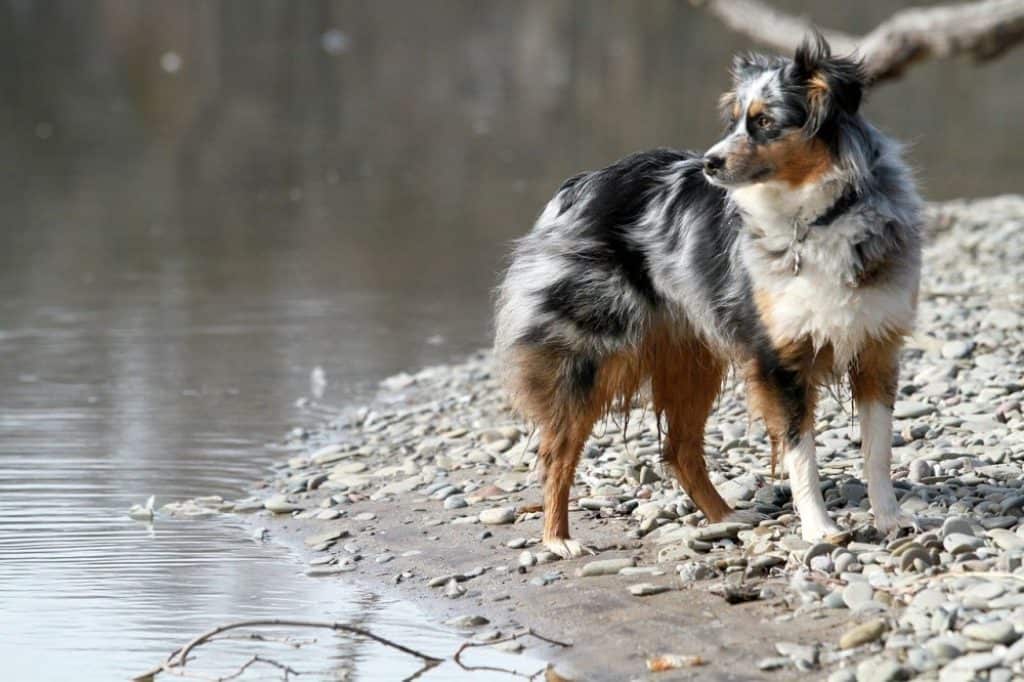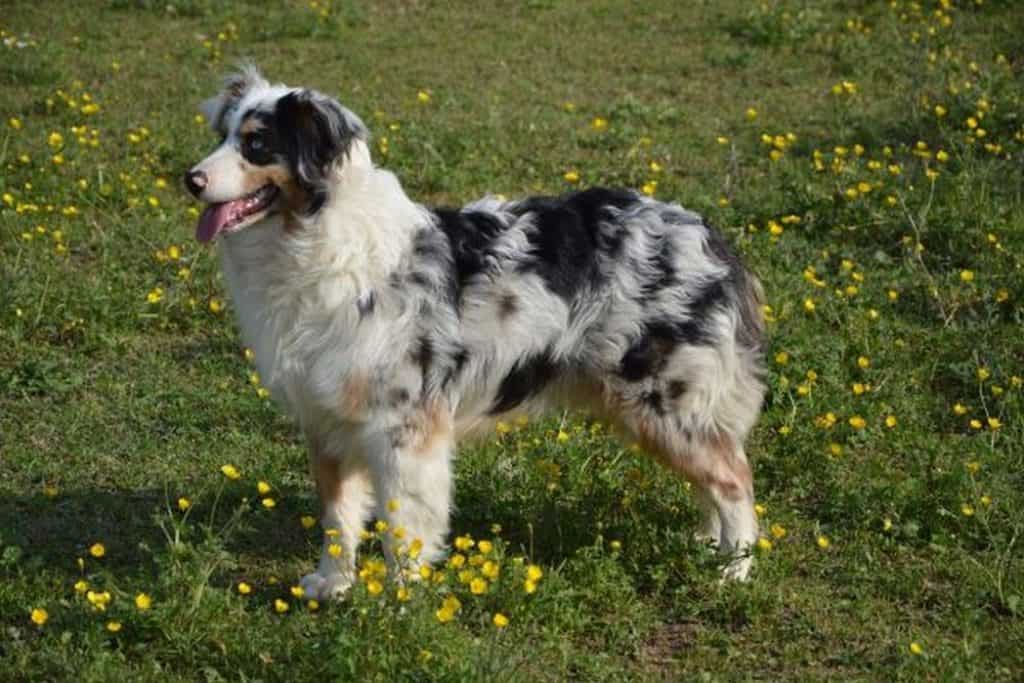Australian Shepherds are among the most hard-working and energetic breeds in the world.
They’re tireless, extremely active, and willing to do whatever you ask of them.
So, it’s very likely that people looking to get an Australian Shepherd are planning to put their dog to work.
This may involve working on the farm or being a loyal companion for long hikes, runs, or bike rides.
Australian Shepherds are very athletic and built to withstand these tests.
However, it all starts with the feet. The type of feet a dog has is crucial to how well it can move.
So, it’s important to know the type of feet your dog has.
For example, if you want to take your Aussie swimming, you’re probably wondering do Australian Shepherds have webbed feet that can help them swim faster and have more control.
You’ll find the answer to this and other related questions below.
[wpsm_toplist]
Do Australian Shepherds Have Webbed Feet?

The purebred Australian Shepherd doesn’t have webbed feet.
If your Aussie does have webbed feet, it’s more than likely that at some point it has been crossbred with some other breed that was mostly developed for swimming.
Some of these breeds that are occasionally mixed with Australian Shepherd are Golden Retriever or Labrador Retriever.
Don’t mix this up with the webbed feet they have as puppies.
Almost all dog breeds have webbed feet at a very young age that goes away as they mature.
However, this doesn’t mean that Australian Shepherds can’t be great swimmers.
Even though they don’t have webbed feet, they have natural instincts that help them hold their own when in water.
Some Aussies may be a bit reluctant at first to get their feet wet, but once they get used to the water they surely do enjoy it and can learn to be excellent swimmers.
What Kind of Feet do Australian Shepherds Have?

So we’ve established that Australian Shepherds don’t have webbed feet, but what kind of feet they do have?
Aussie’s feet are rather large, oval, and compact.
They’re rather large and feature thick pads and closely-knit and well-arched toes which help them withstand any kind of environment.
The standard for Australian Shepherd describes the type of their feet as semi-hare or modified hare feet.
Having this kind of foot allows Aussies to trot long distances, easily change direction, and instantly alter their gait depending on the roughness of the terrain.
Like all dogs with this kind of feet, they have a longer third digital bone which helps them reach the faster initial speed, a trait that is very useful when herding livestock.
Also, according to the Australian Shepherd standard, the pads should be resilient and thick as it is important for traction, shock absorption, and protection on particularly rough terrain.
Different Types of Dog Paws
Different dogs are developed and bred for different purposes.
And, just like developing other traits over time that are useful for what a dog does, they also have different types of paws.
Every paw type is suited for a certain environment and the type of activity a certain dog normally engages in.
For example, dogs that tend to swim more will have a different type of feet compared to those whose tasks involve a lot of running across the rough terrain.
In general, dog paws can be classified into three main categories.
Cat’s Feet
Cat’s paws are the smallest and the most compact of all three types of dog’s feet. In addition, they’re also the most rounded of all.
They got their name because they resemble feline feet with their neat and round shape. Of course, cat’s feet in dogs have nothing to do with retractable claws.
Dog paws that belong in this category feature high-arched toes that are closely knit together.
They have a shorter third digital bone which allows dogs to spend less energy while getting their feet off the ground and provide a good grip and stability on rough terrains.
Dogs that have this kind of feet are mostly working dogs, such as Akitas or Dobermans.
Hare Feet
Dogs with hare feet have paws with two central toes which are a bit longer than the others, similar to what you can see with rabbits.
The toes are also not as distinctively arched as with the cat’s feet, which makes the whole foot seem longer than the average.
Just like rabbit’s paws, this type of dog’s feet has a longer third digital bone. This means that they require more energy to move.
However, this also means that they can move faster and reach higher speeds over short distances.
Dogs with paws that belong in this category, such as Greyhounds, are known for their speed and acceleration.
Webbed Feet
While most dogs have webbing between their toes as puppies, only some breeds keep this skin membrane when they mature.
The feet with webbing are similar to the feet of aquatic animals such as ducks or frogs.
This type of paws is the most common with breeds that were developed to assist hunters and fishermen by retrieving downed birds or capturing fishing nets.
Webbed feet help these dogs swim faster and better control their movement while in water.
The best-known representatives are Newfoundlands and Labrador Retrievers.
Besides swimming, some breeds, such as Dachshund, use webbed feet for digging when chasing after rodents.
Conclusion
Healthy feet are essential for proper dog’s movement.
They support the weight of the whole body and are first in contact with rough and tough terrain, rucks, hot asphalt, thorns, and anything else that can hinder a dog’s movement.
Poor and unhealthy feet can seriously limit a dog’s athletic ability, not to mention causing a lot of pain.
Taking care of a dog’s paws is especially important with breeds that are extremely active such as Australian Shepherds.
Make sure to regularly check your Aussie’s feet and keep them clean and dry. This is something you should do after every outing.
Also, whenever you introduce a new type of activity, make sure to ease your dog into it so their feet can get used to new surfaces and movement patterns.





